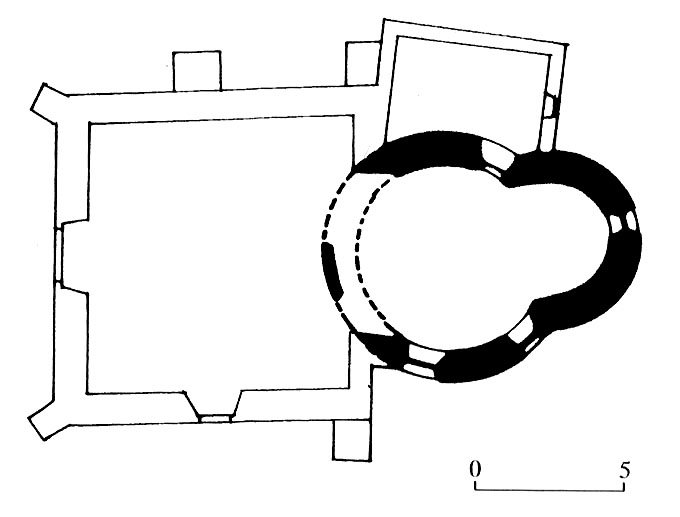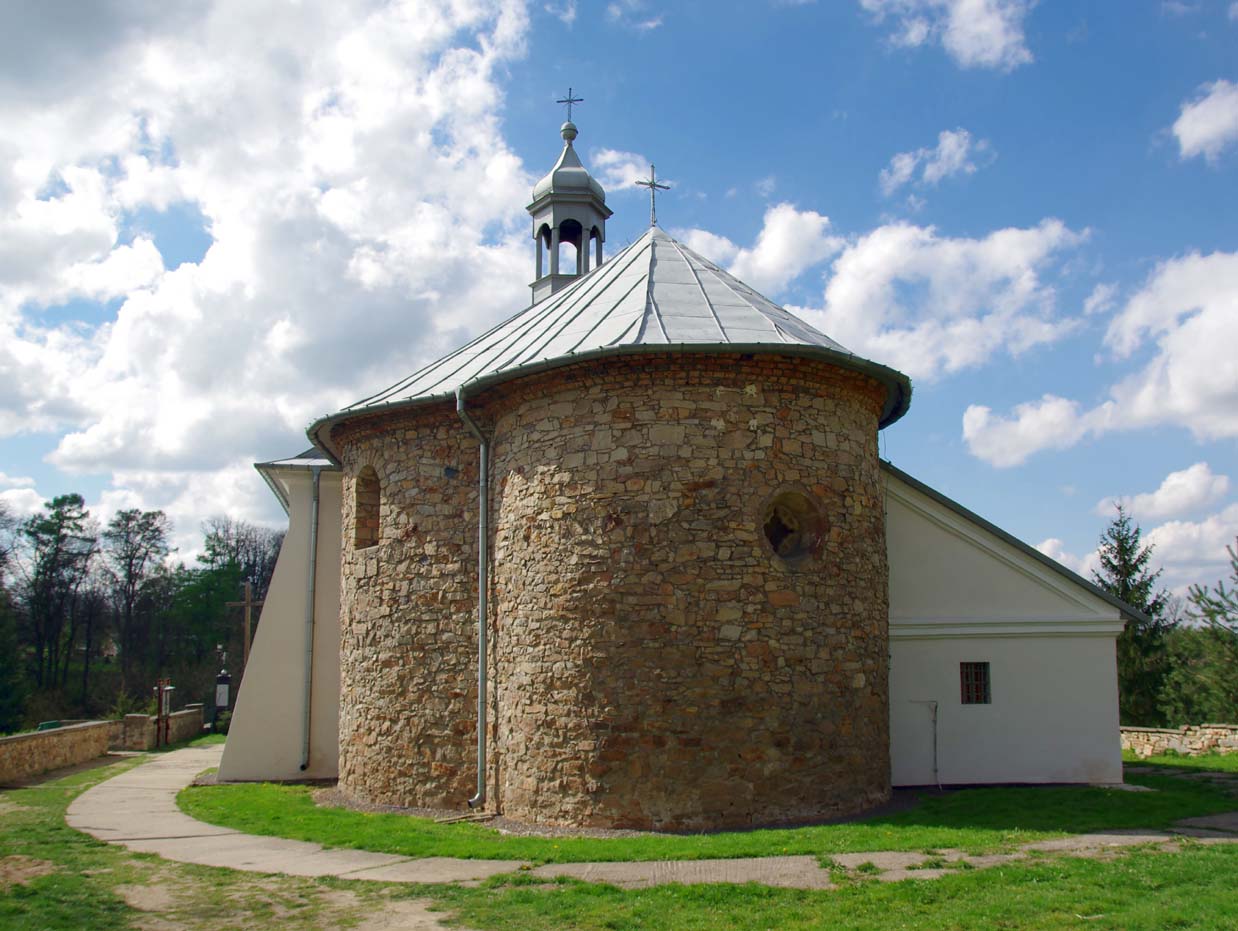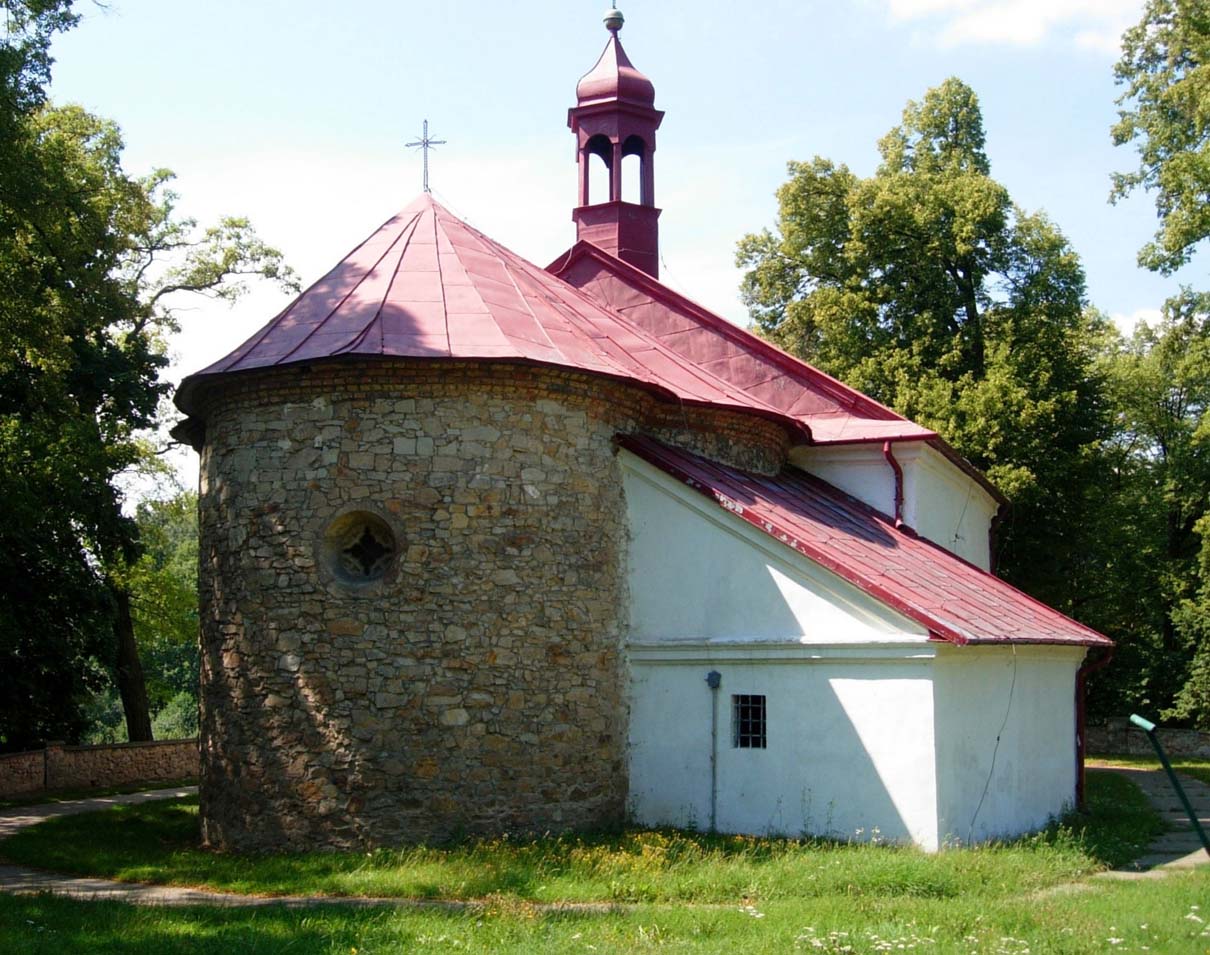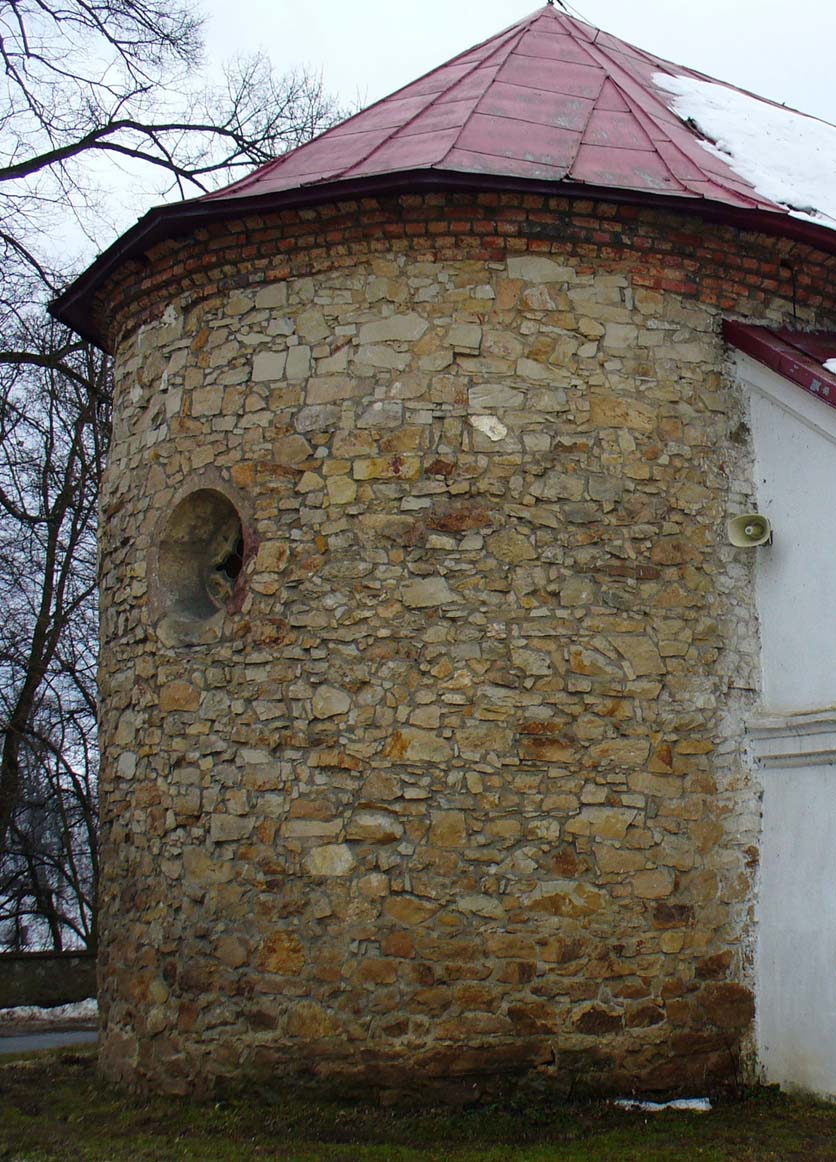History
The medieval rotunda in Grzegorzowice was once dated to the end of the 11th century, but newer research has changed the period of its construction to the second half of the 13th, and even to the beginning of the 14th century. In the oldest known source record from 1350-1351, included in the papal tithing register, it was referred to as “ecclesia nova”, hence the supposition that it was built shortly before that date. According to the chronicler Jan Długosz, the founder of the church was Nawój of the Topór coat of arms.
Before 1627, the nave was added to the rotunda, and in 1633 the consecration was made. In 1845, church was already in such bad condition that it was planned to be completely renovated. These intentions were not realized, which in 1851 led to the collapse of the roof and the closure of the church for the congregation. In 1854 the temple was rebuilt and a sacristy was erected next to it. In 1932, another thorough restaurant was carried out, combined with the display of the medieval walls and the reconstruction of the tracery of the apse window.
Architecture
The rotunda was built on a nearly circular plan with a diameter of 6.8 to 7.7 meters, with a semicircular apse with a diameter of 4 meters from the east. The walls of the rotunda were built of local unworked sandstone, forming a wall with a thickness of 1 to 1.1 meters. In the apse there was a round window with a Gothic quatrefoil tracery placed. On the south side, in the nave of the rotunda, there were two late-Romanesque semicircular windows, while the entrance was most likely located in the western part of the rotunda’s nave. The interior of the apse was probably originally covered with a conch.
Current state
Currently, the medieval rotunda is the presbyterial, eastern part of the early modern church of St. John the Baptist, it is therefore covered from the west by a four-sided nave and from the north by a sacristy. The western part of the rotunda was demolished during the reconstruction. Inside the church there is a stone baptismal font from the 14th century. The uniqueness of the building lies in the fact that it is probably one of the youngest late-Romanesque buildings in Poland.




